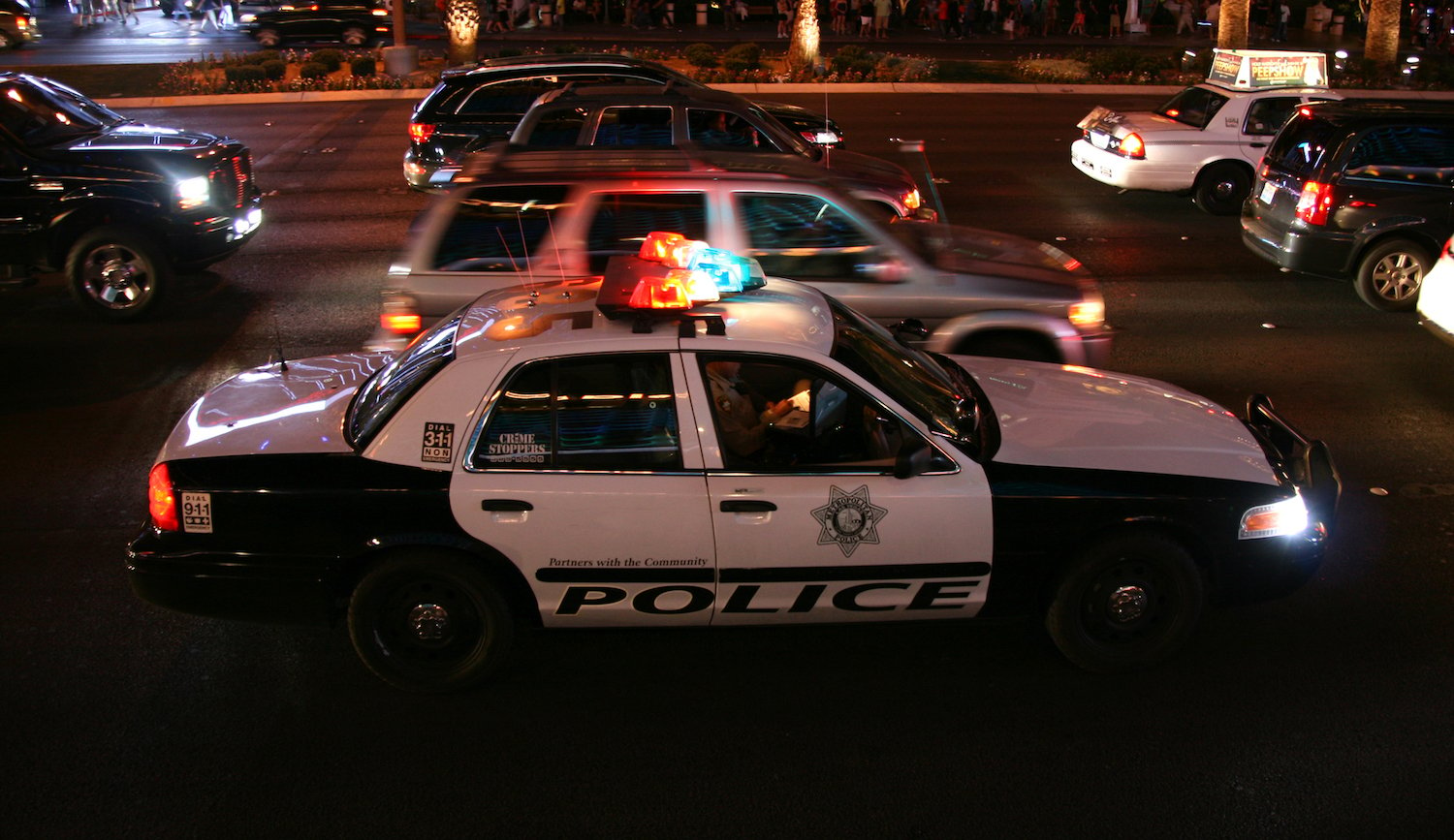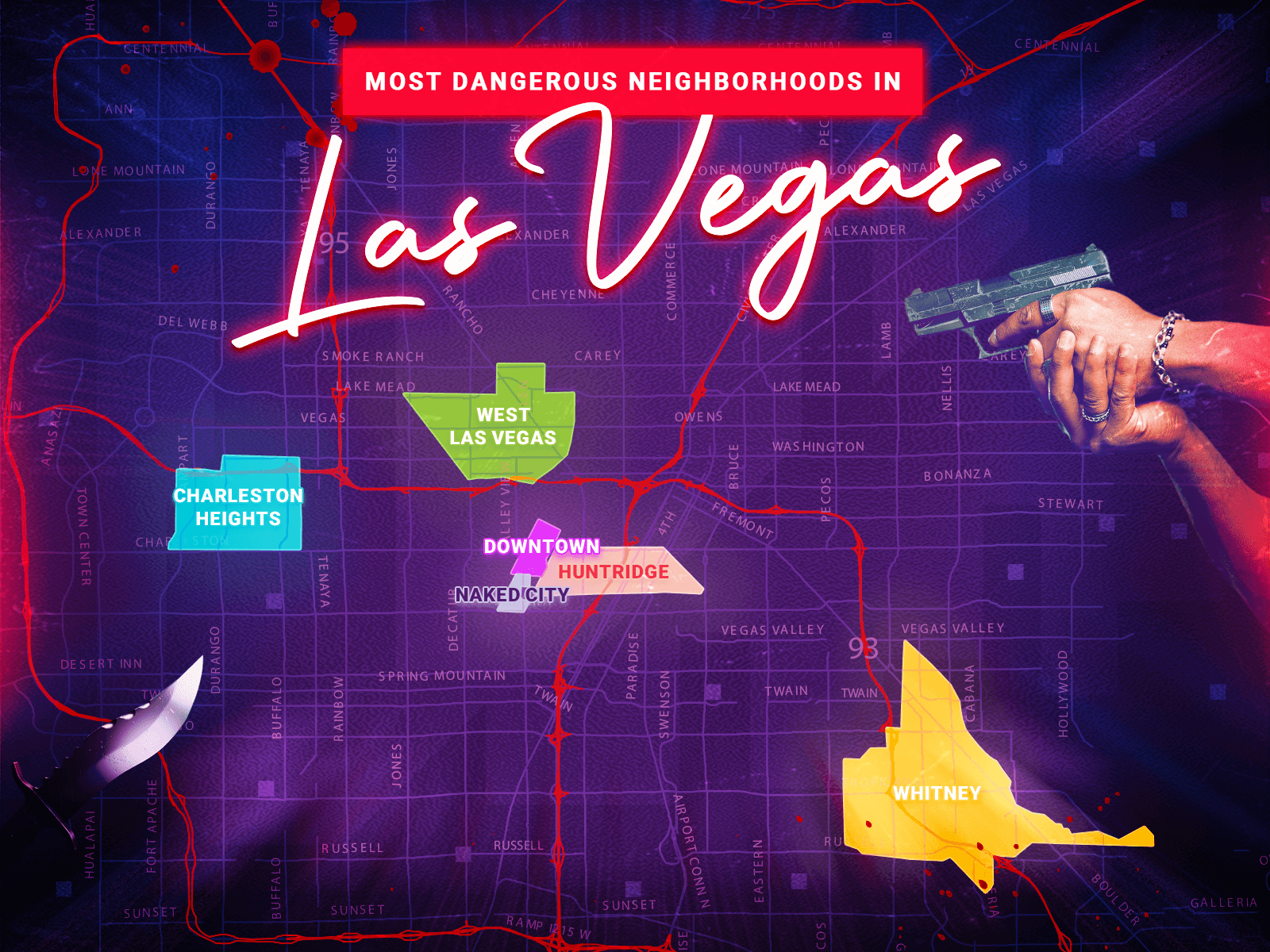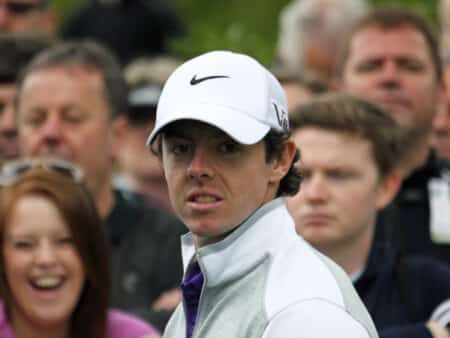Las Vegas’ Most Dangerous Neighborhoods: Six High-Risk Areas to Avoid

Las Vegas draws visitors from around the world with its dazzling lights, entertainment, and world-class casinos. However, beyond the famous Strip, certain neighborhoods present a significantly higher risk of crime than others. If you’re planning to explore parts of the city that many tourists overlook, it’s wise to know which areas require caution and which are best avoided entirely.
Statistics reveal that your odds of being a victim of violent crime in Las Vegas are about 1 in 187, noticeably higher than the national average of roughly 1 in 250. These numbers do not mean that the whole city is unsafe, but crime in Las Vegas tends to concentrate in specific neighborhoods. Here’s a guide to the places visitors and newcomers should steer clear of for their own safety.

West Las Vegas: Crime Hotspot with Extreme Risk
Positioned northwest of the Strip, West Las Vegas stands out as the city’s most hazardous area. This neighborhood suffers from high rates of poverty and is plagued by serious issues including gang presence and rampant drug activity. The violent crime rate here is staggering-713% above the U.S. average.
Residents have a 1 in 32 likelihood of falling victim to violent crime, while the odds of being impacted by any type of crime are as high as 1 in 7. Incidents range from frequent homicides to armed standoffs and brutal assaults. Given these figures, West Las Vegas is not a destination for tourists-day or night-and visitors should avoid the area altogether for their safety.
Naked City: Notorious Reputation Near the Strip
Just west of The Strat-one of Las Vegas’ iconic towers-lies Naked City, an area notorious for crime despite its proximity to the glamour of the Strip. Violent incidents and drug-related offenses are commonplace, with multiple homicides reported in recent years.
Naked City’s reputation for danger is so entrenched that taxi services often decline fares to this neighborhood after dark. For anyone considering walking past the northern end of the Strip, it’s crucial to be aware of this boundary and detour accordingly.
East Las Vegas and Whitney: Elevated Crime and Property Risks
The region encompassing Whitney and the area around Boulder Highway presents another threat, especially for those seeking budget accommodation. Violent crime rates here soar to levels 288% higher than the national average, making it a particularly unsafe choice for temporary stays.
There are many extended-stay hotels in this part of Las Vegas, but the property crime rate is also alarmingly elevated-167% above the national norm. Tourists and new residents might be tempted by low prices, yet the risk of theft and personal harm far outweighs any cost savings. It’s best to look elsewhere to stay or live.
Charleston Heights: High Poverty and Unemployment
Charleston Heights ranks among the lowest-income areas in the United States, with nearly half of all children living beneath the poverty line and unemployment exceeding the national average by 73%. Such socioeconomic challenges unfortunately go hand-in-hand with high crime.
The odds of being victimized in Charleston Heights stand at 1 in 13. In just a two-day span in October 2022, over 50 crimes were reported, ranging from assaults and thefts to burglaries and other violent offenses. Residents have described repeated experiences with shootings and constant criminal activity. For tourists or anyone unfamiliar with Las Vegas, Charleston Heights is best avoided.
Huntridge: Circle Park’s Troubled History
Located in the southern part of Las Vegas, Huntridge is another neighborhood with a troubling reputation. Crime centers around Circle Park, which has gained notoriety as a gathering place for drug users, homeless individuals, and thieves.
The park was closed in 2006 after a violent stabbing and made headlines again in 2018 following the assault and shooting of an elderly woman. Although Circle Park has reopened and maintains regular public hours, it is not considered safe. Visitors, especially those unfamiliar with the area, should exercise caution or avoid Huntridge altogether, especially after dark.
Downtown Las Vegas: Increased Safety with Persistent Risks
Downtown represents the heart of the city’s original entertainment district, and while it has improved over time, it remains a concern in terms of safety. The violent crime rate in Downtown Las Vegas runs 98% higher than the national average.
In response to increased incidents, especially around the lively Fremont Street corridor, the local police have heightened their presence during peak tourist seasons. Measures such as bag checks, metal detectors, and curfews have helped deter some trouble, but with hundreds of police stops and weapons confiscated during the summer, it’s clear that vigilance is necessary.
That said, many attractions in Downtown are safe for tourists, as long as you stick close to Fremont Street and remain alert at all times.
Las Vegas Safety at a Glance: How Concerned Should You Be?
It’s natural to feel uneasy reading about crime statistics in major tourism hubs. However, the broader picture reveals Las Vegas to be a generally safe city for residents and visitors. As a matter of fact, Forbes once listed Las Vegas as the 14th safest city in the U.S. among those with a population exceeding 300,000.
While staying cautious is always smart, visitors are encouraged to enjoy Las Vegas’ countless attractions-just avoid wandering into higher-risk neighborhoods and always remain aware of your surroundings.
Lead image: Clément Bardot/Wikimedia Commons

















